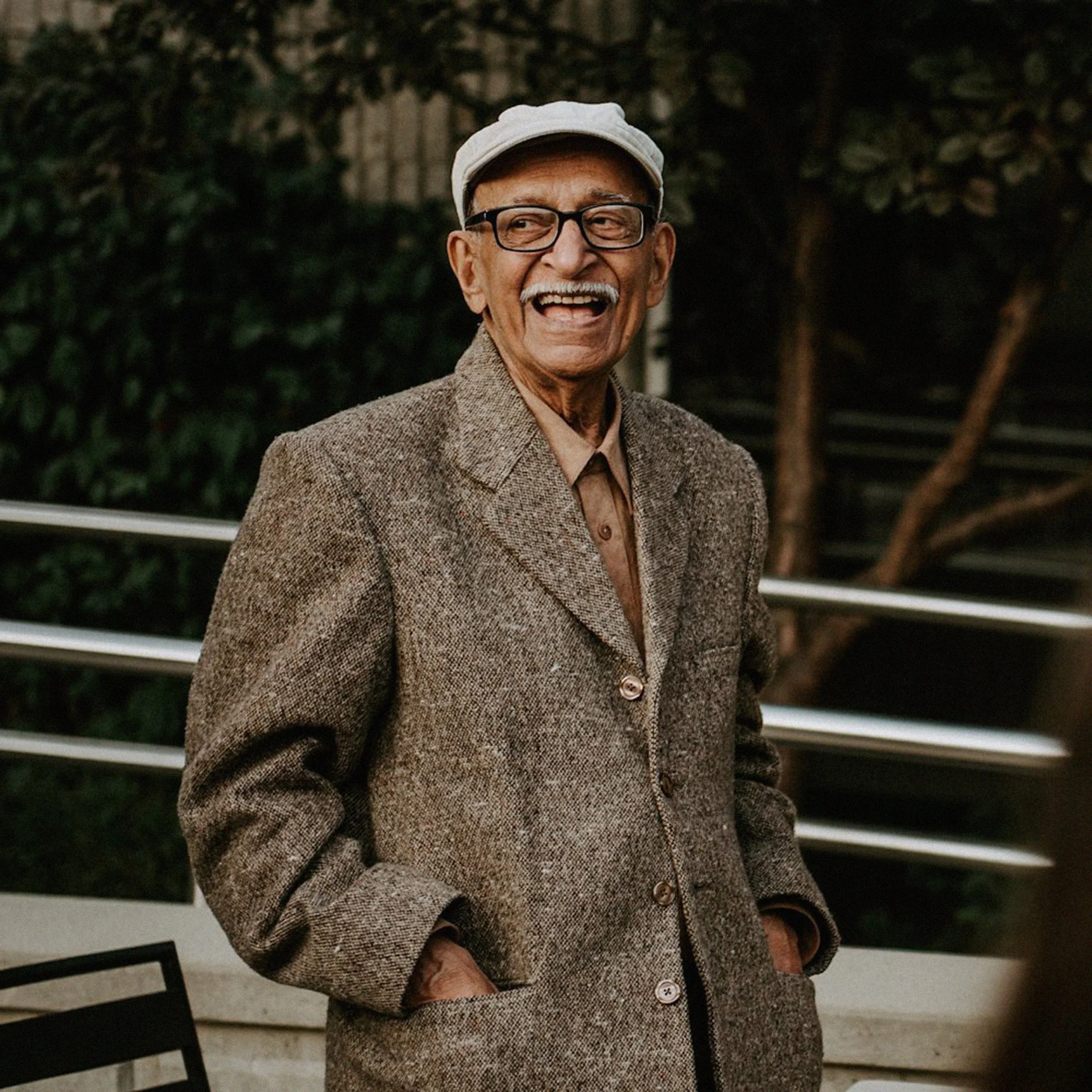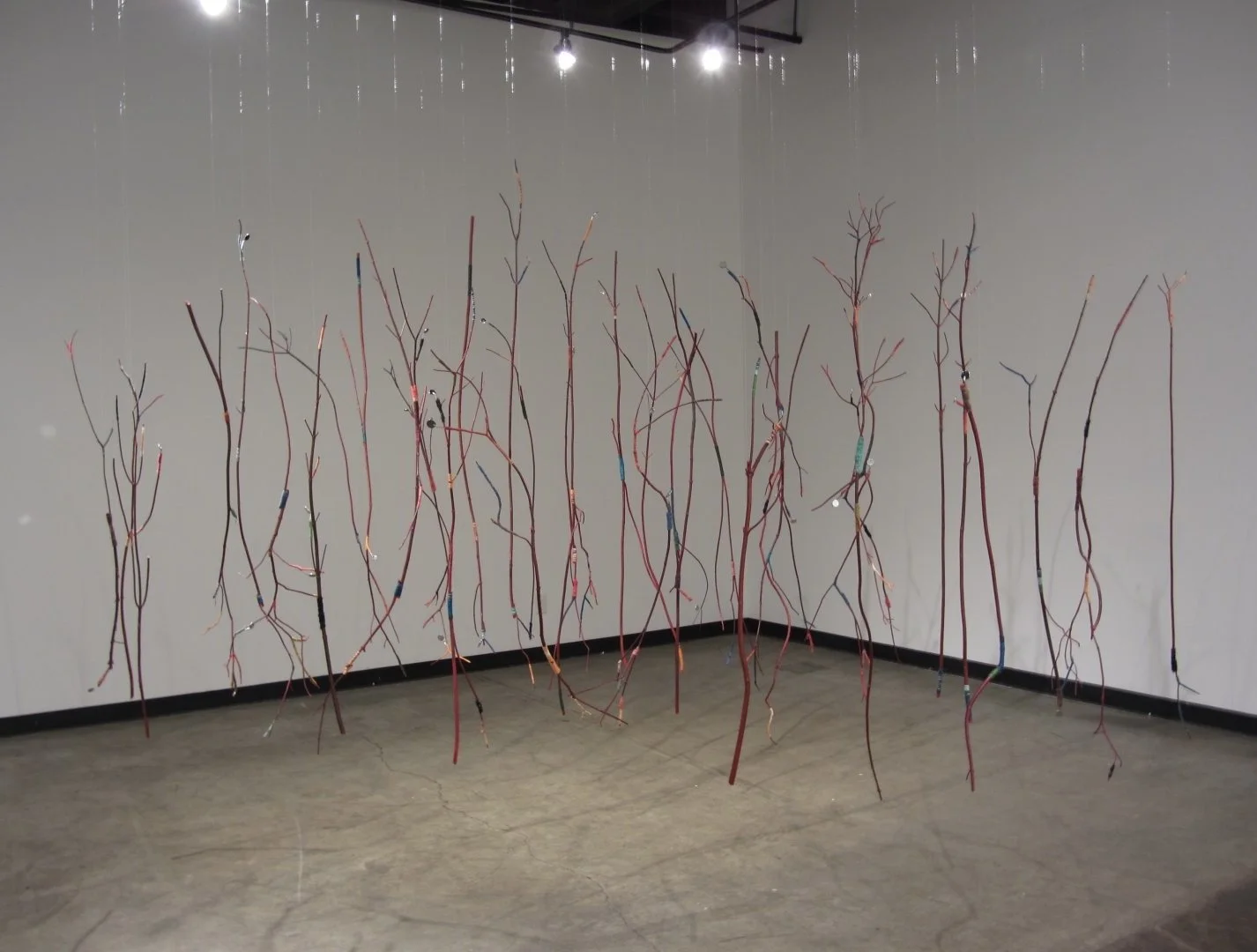P.Mansaram exhibition introduces B.C. to multidisciplinary artist's vast body of intricate work
The Medium is the Medium is the Medium shines a light on the late Indian-born, Ontario-based artist’s career spanning more than five decades
P.Mansaram, Mystic Image, 1966, mixed media on plywood, 125 cm x 125 cm. Photo courtesy of the estate of the artist.
Surrey Art Gallery presents P.Mansaram: The Medium is the Medium is the Medium from January 22 to March 20. Admission is free.
PANCHAL MANSARAM CREATED art every single day over his decades-long career, amassing a portfolio of thousands of works, including drawings, paintings, collage, texts, sculptures, Xerox pieces, silkscreen prints, and films. Characters, symbols, figures, and spaces recur in different scenes and configurations; as he once put it, repetition was a pathway to finding god.
While growing up in Mount Abu, Rajasthan, Mansaram dreamed of being an artist, going on to study in Amsterdam, travel extensively, and, in 1966, move to Canada, settling in Burlington with his wife and infant child. Over the years, Mansaram had solo shows at the Art Gallery of Mississauga, Art Gallery of Hamilton, and the South Asian Gallery of Art in Oakville, among other places, earning critical praise, yet his name was generally and surprisingly not widely recognized.
That began to change with P.Mansaram: The Medium is the Medium is the Medium, an exhibition curated by Indu Vashist and Toleen Touq of the South Asian Visual Arts Centre at the Art Museum at the University of Toronto in 2019 that also ran at the Art Gallery of Burlington in 2020. Mansaram passed away in December 2020 at age 86, just as a wider Canadian audience was beginning to appreciate his work.
Now, British Columbians have the chance to discover the prolific artist, with Surrey Art Gallery hosting P.Mansaram: The Medium is the Medium is the Medium, with Indian Summer Festival as community partner. (The artist never used a space between his first initial and last name. The exhibition is co-organized by the Art Museum at the University of Toronto and South Asian Visual Arts Centre with financial support of the Ontario Arts Council.)
Vashist, who has served as executive director of SAVAC since 2013, recalls meeting Mansaram several years ago and being astonished by the sheer volume of his work, and how, despite the use of reproduction in it, his art never feels repetitive.
“The first time I came across his work, I was just blown away, to be totally honest,” Vashist tells Stir on the line from a snow-buried Toronto. “The exhibition we have up is not even scratching the surface; there are thousands and thousands of works. He worked every single day of his life. He was a full-time art teacher for his career, so he worked full-time and he would come home every night and work, and sometimes he worked all night—just remarkable.
“Within the work there was so much going on,” Vashist adds. “There is so much imagery that is laden with meaning, and the way in which he played with those images—whether it was layering them one on top of each other or placing them with each other—created new meanings. While he worked with so many different media…he was always on the cutting edge and interested in the world of technology and the role that technology played in society, but then was also very much interested in the past and the ancient, and so the way he brought time together in that way was really interesting.”
The curators took an intuitive approach to develop P.Mansaram: The Medium is the Medium is the Medium. The exhibition aims to give people a taste of the breadth of the artist’s work rather than focus on a specific period of his life or offer a survey of his career.
“We decided on the pieces that spoke to us the most,” Vashist says. “Most of them have a lot of repetition, which is something we were really interested in….You might see the image of a horse in multiple works, but they might take very different forms. Some of them are toy horses and others are drawn horses; some are painted.
“When we asked him about that—how we keep seeing certain motifs or images throughout his life—he described it as when you’re falling in love with somebody and you kind of see them everywhere or you see traces of them everywhere. That’s how images worked for him. Once he saw something, he would keep seeing it. Sometimes that was colour; sometimes that was motif—all these different elements. He would see it and bring it back in his work.”
P.Mansaram, Maharana Pratap, 1967, mixed media on paper, 64 x 79 cm. Photo courtesy of the estate of the artist.
The exhibition’s title is a play on a phrase coined by media theorist Marshall McLuhan: “the medium is the message”. The two were friends and collaborators. Mansaram, who had reached out to McLuhan upon reading about him in LIFE magazine, created collage work that appeared on covers of McLuhan’s Voices of Literature, a two-volume anthology for high schools, for instance. He also produced Rear View Mirror, a collage series inspired by McLuhan’s writings. The exhibition illustrates how Mansaram incorporated many of McLuhan’s ideas into his artistic practice.
“He played enough with medium to get to a different point,” Vashist says, using Delwara Column 1 and 2 in —crafted out of photocopies—as an example. “The photocopied images are from this temple in Mansaram’s home town, and the images are of stone sculptures. If you think about how long it takes to make a life-size stone sculpture, that takes years. When photocopy machines first came out, he was involved in a movement called xerography….He had a friend who owned a photocopy store and he asked his friend if he could go into the store and play with the machine; he would play with it all night. The columns are images of sculptures that took probably years and years to make, and he just kept photocopying these images of the sculptures and he collaged them on these columns to look like temple columns. He’s created them through playing with a photocopy machine. He’s playing with the medium of Xerox, and what’s the message that’s being created? The production of images changes over the course of time. Now that’s even more so because everyone has a phone in their hands at all times. What the show does is really make you think about method of capturing.”
P.Mansaram. Photo by Indu Vashist
Jordan Strom, curator of exhibitions and collections at Surrey Art Gallery, says that upon learning of P.Mansaram: The Medium is the Medium is the Medium, the organization was immediately interested in presenting it.
“Here was an artist, who had been working for close to a half century in the Toronto area, that most of us on the West Coast—indeed, many in Ontario even—had never heard of,” Strom tells Stir. “When I first saw his work in digital and print reproductions I was struck by the fresh immediacy of the work: the wide-ranging use of colour, pattern, and materials; the combinations of collage, printmaking, xerox, painting, and sculpture; the tensions between figuration and abstraction.”
What made the touring exhibition a natural fit for Surrey Art Gallery, Strom adds, was Mansaram’s innovative contemporary style and global vision. Furthermore, his career and his 50-plus years of art making art align with the gallery’s mandated art historical focus from the late 1960s to the present.
“The artist was not afraid to formally experiment with his image-making, and he combined that experimental approach with a sophisticated yet playful dialogue between Eastern and Western art,” Strom says. “We are delighted to be working with SAVAC and U of T to bring this important Canadian artist to West Coast audiences.”
While Mansaram visited the Ontario exhibition during lockdown, Vashist laments the fact that he passed before being able to see the show tour across Canada.
“Our hope in having this exhibition is that he will be known after this,” Vashist says. “He really was craving that people know his work, so we’re really hoping that this draws attention to him and his work; that was the impetus behind organizing the show in the first place.
“He was just the most creative person I’ve ever met,” Vashist adds. “He was always curious about everything. He wanted to connect with young people….He always wanted to talk about the here and now and the future….I hope people go and spend some time with the work and really look at all the different layers that are in the work. They’re quite heavy, even though they’re so fun-looking. Because they’re colourful and very visually enticing, it takes some time to really absorb the weight of what his work is all about.”
For more information, see Surrey Art Gallery.
















